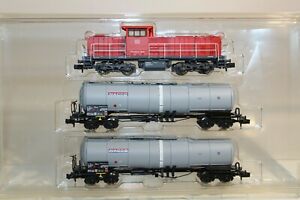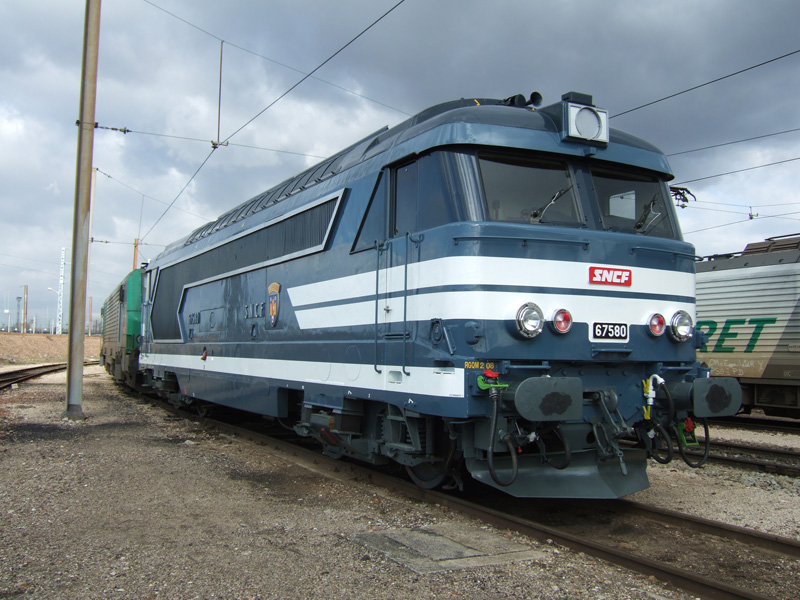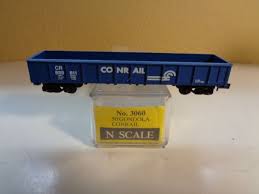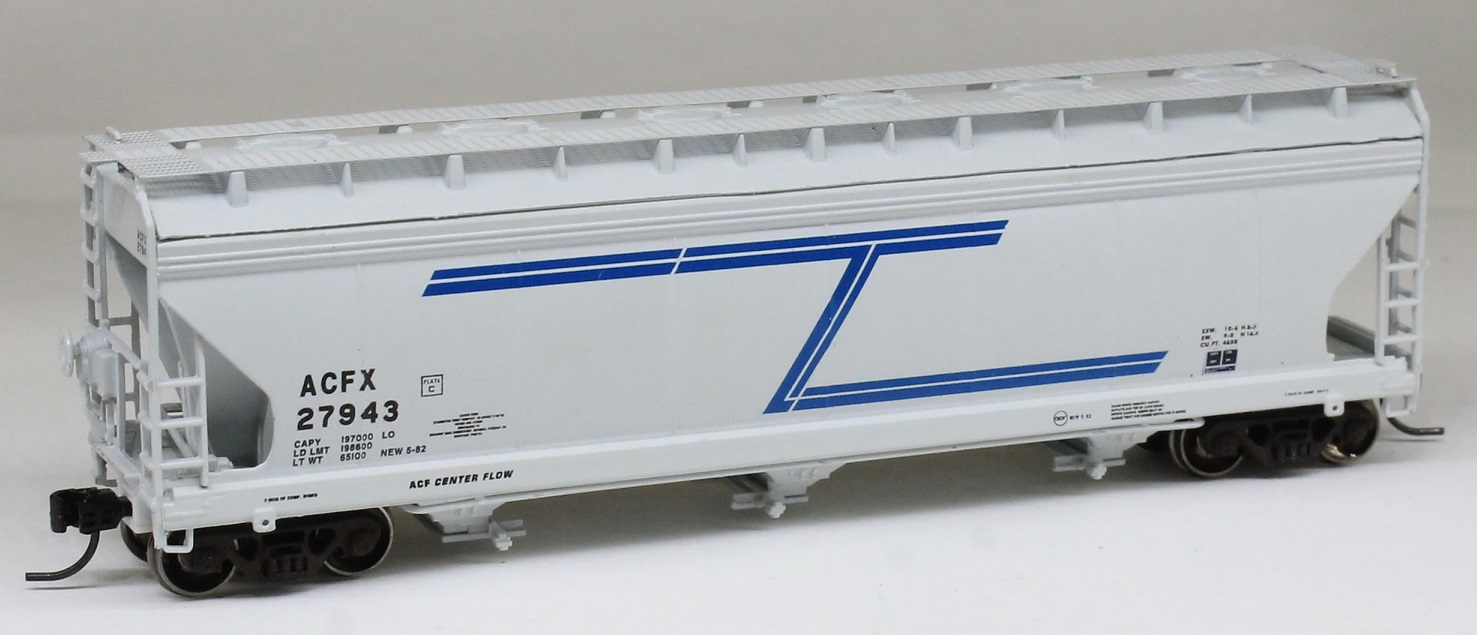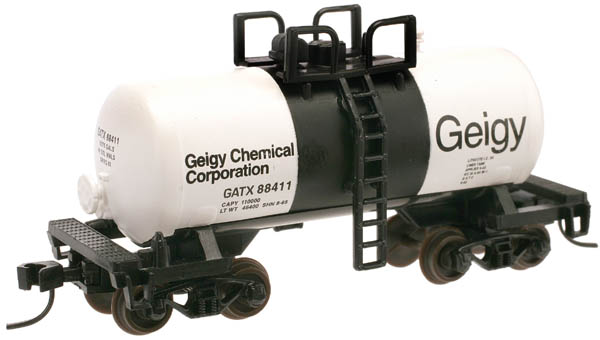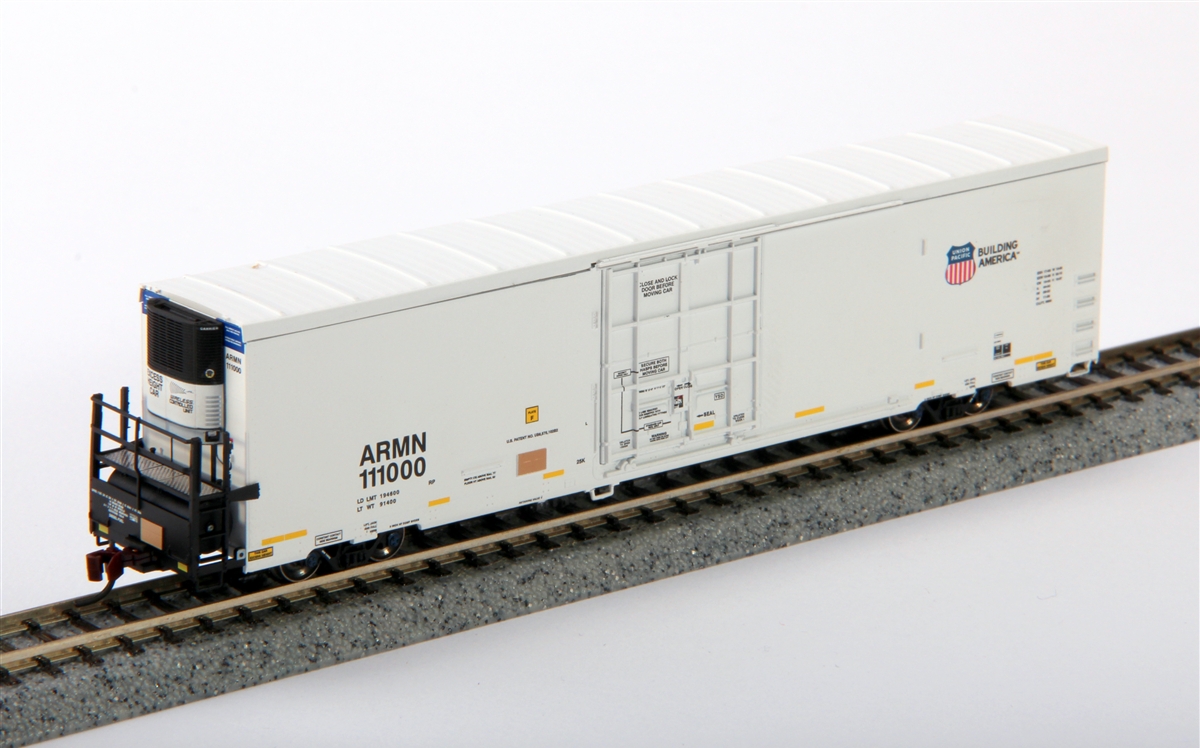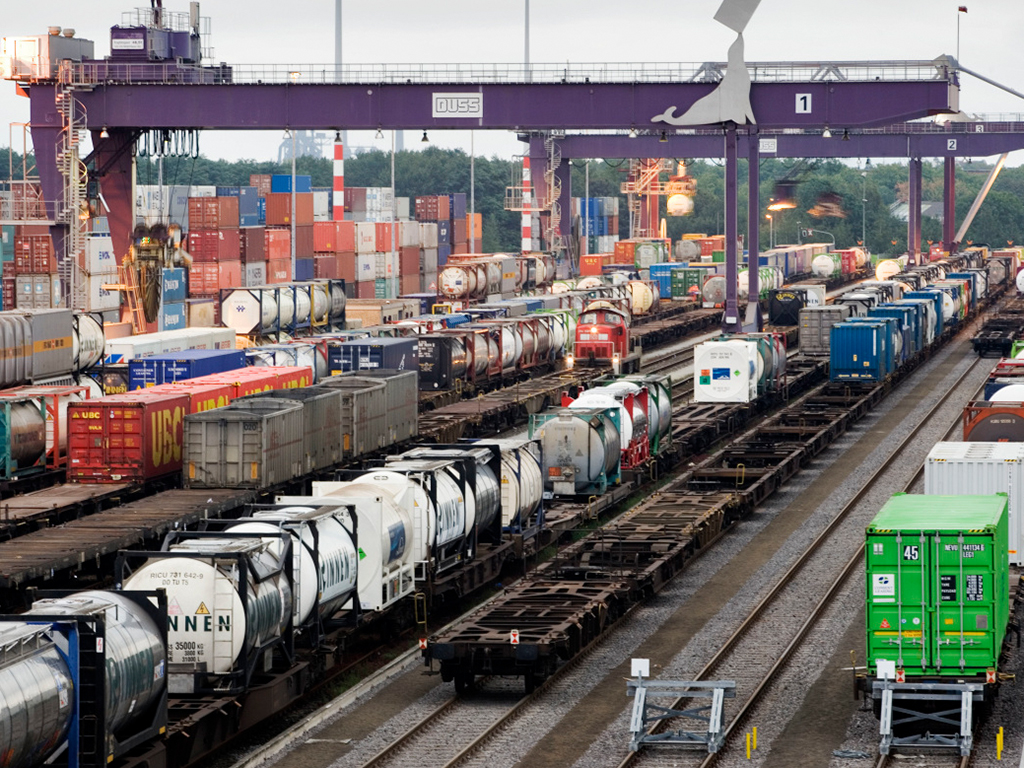Minitrix - 11135 - Mixed Freight Consist, Europe Epoch VI - DB Schenker - 3-Unit Starter Set
| Stock Number | 11135 |
| Original Retail Price | 149.95€ |
| Brand | Minitrix |
| Manufacturer | Minitrix |
| Body Style | Minitrix Train Set Europe |
| Prototype Vehicle | Mixed Freight Consist, Europe Epoch VI (Details) |
| Road or Company Name | DB Schenker (Details) |
| Road or Reporting Number | 3-Unit Starter Set |
| Print Color(s) | White |
| Coupler Type | Rapido Hook |
| Coupler Mount | Body-Mount |
| Wheel Type | Chemically Blackened Metal |
| Wheel Profile | Small Flange (Low Profile) |
| Multipack | Yes |
| Multipack Count | 3 |
| Multipack ID Number | 11135 |
| DCC Readiness | Ready |
| Release Date | 2013-01-01 |
| Item Category | Starter Sets |
| Model Type | Electric |
| Model Subtype | 1016 |
| Model Variety | 5-Unit set |
| Prototype Region | Europe |
| Prototype Era | EU Epoch VI (2001 - Present) |
| Scale | 1/160 |
| EAN/JAN/GTIN13 Number | 4028106111358 |
Specific Item Information:
"Modern Freight Service" Starter Set. (Serie 6400, DB Schenker Rail)
Prototype: DB Schenker Rail Nederland NV MAK class 6400 locomotive and two tank cars painted and lettered for the firm NACCO, used in the Czech Republic.
Prototype History:
A mixed freight train is a train that hauls a variety of different freight cars or wagons. A mixed freight depends on the locale and industries. The train will be carrying cars to be brought to a yard where a local will bring them to the various industries. The location determines the industries, and the industries determine the cars.
Which cars are in which trains is determined by the waybills they are assigned - which is close to a totally random process. For example, through freights simply run from up staging to down staging and back, stopping long enough to trade out 30 percent of their cars and change from steam to motor (catenary) or vice-versa. Thus freights will have a variety of cars, changing each time they pass through a switching yard.
Which cars are in which trains is determined by the waybills they are assigned - which is close to a totally random process. For example, through freights simply run from up staging to down staging and back, stopping long enough to trade out 30 percent of their cars and change from steam to motor (catenary) or vice-versa. Thus freights will have a variety of cars, changing each time they pass through a switching yard.
Road Name History:
DB Schenker is a division of the German rail operator Deutsche Bahn AG that focuses on logistics. The company, created by reorganisation and rebranding of Deutsche Bahn subsidiaries, comprises a logistics division encompassing air, land, and sea freight, and a rail division made up from European rail freight companies.
Since December 2007 DB Schenker has been the freight logistics subsidiary of Deutsche Bahn. DB Schenker combines all transport and logistic activities of Deutsche Bahn (DB Schenker rail and DB Schenker logistics) employing over 94,600 staff spread across about 2,000 locations in about 140 countries.
DB Schenker bought out the British rail haulage firm English Welsh & Scottish Railway (EWS) in 2007, and from 1 January 2009 the logistics operations of the companies DB-Schenker, Railion, EWS, and Transfesa were all combined under the DB Schenker brand name.
Since December 2007 DB Schenker has been the freight logistics subsidiary of Deutsche Bahn. DB Schenker combines all transport and logistic activities of Deutsche Bahn (DB Schenker rail and DB Schenker logistics) employing over 94,600 staff spread across about 2,000 locations in about 140 countries.
DB Schenker bought out the British rail haulage firm English Welsh & Scottish Railway (EWS) in 2007, and from 1 January 2009 the logistics operations of the companies DB-Schenker, Railion, EWS, and Transfesa were all combined under the DB Schenker brand name.
Brand/Importer Information:
Trix is a German company that originally made Trix metal construction sets. one of its co-founders was Stephan Bing, the son of the pioneer toy-maker industrialist Ignaz Bing. In 1935 the company began producing the electrically powered model trains that it became famous for, under the Trix Express label. Prior to the outbreak of World War II the Trix company produced a small range of fairly unrealistic AC powered three rail models running at 14 volts.
N gauge models under the Minitrix brand were made from the late 1960s mostly of European prototypes (German and British primarily). North American prototypes were also manufactured and marketed under the Aurora "Postage Stamp" brand; later these items were sold under the American Tortoise, Model Power and Con-Cor brands. Trix sometimes utilized North American consultants to aid in the design of this portion of the product line. The "Hornby Minitrix' brand was used in the 1980s for a short lived range of British outline models using the earlier product tooling.
Trix's owner in the 1980s and 1990s was Mangold, which went bankrupt in the late 1990s and Märklin purchased the assets in January 1997. In part, this purchase was a reflection of Märklin's need for added production capacity; Trix had been manufacturing certain items for Märklin in previous years. The purchase was also in response to the earlier purchase of the Karl Arnold company by the Italian company Rivarossi; Märklin were very keen to take over Trix market share in 2-rail H0 and especially Minitrix, until then Märklin had not marketed N gauge models. In 2003, Märklin introduced its first N gauge models under the well established Minitrix brand. A number Märklin H0 scale three-rail AC locomotives have also been introduced in two-rail DC versions under the Trix logo and many models are shared between the two brands.
From Wikipedia
N gauge models under the Minitrix brand were made from the late 1960s mostly of European prototypes (German and British primarily). North American prototypes were also manufactured and marketed under the Aurora "Postage Stamp" brand; later these items were sold under the American Tortoise, Model Power and Con-Cor brands. Trix sometimes utilized North American consultants to aid in the design of this portion of the product line. The "Hornby Minitrix' brand was used in the 1980s for a short lived range of British outline models using the earlier product tooling.
Trix's owner in the 1980s and 1990s was Mangold, which went bankrupt in the late 1990s and Märklin purchased the assets in January 1997. In part, this purchase was a reflection of Märklin's need for added production capacity; Trix had been manufacturing certain items for Märklin in previous years. The purchase was also in response to the earlier purchase of the Karl Arnold company by the Italian company Rivarossi; Märklin were very keen to take over Trix market share in 2-rail H0 and especially Minitrix, until then Märklin had not marketed N gauge models. In 2003, Märklin introduced its first N gauge models under the well established Minitrix brand. A number Märklin H0 scale three-rail AC locomotives have also been introduced in two-rail DC versions under the Trix logo and many models are shared between the two brands.
From Wikipedia
Item created by: gdm
on 2019-09-19 16:03:46
Last edited by: CNW400 on 2020-07-10 11:41:50
If you see errors or missing data in this entry, please feel free to log in and edit it. Anyone with a Gmail account can log in instantly.
Last edited by: CNW400 on 2020-07-10 11:41:50
If you see errors or missing data in this entry, please feel free to log in and edit it. Anyone with a Gmail account can log in instantly.



